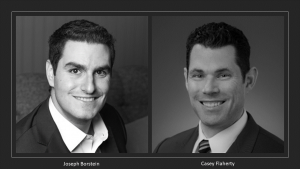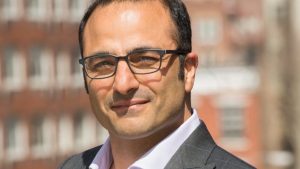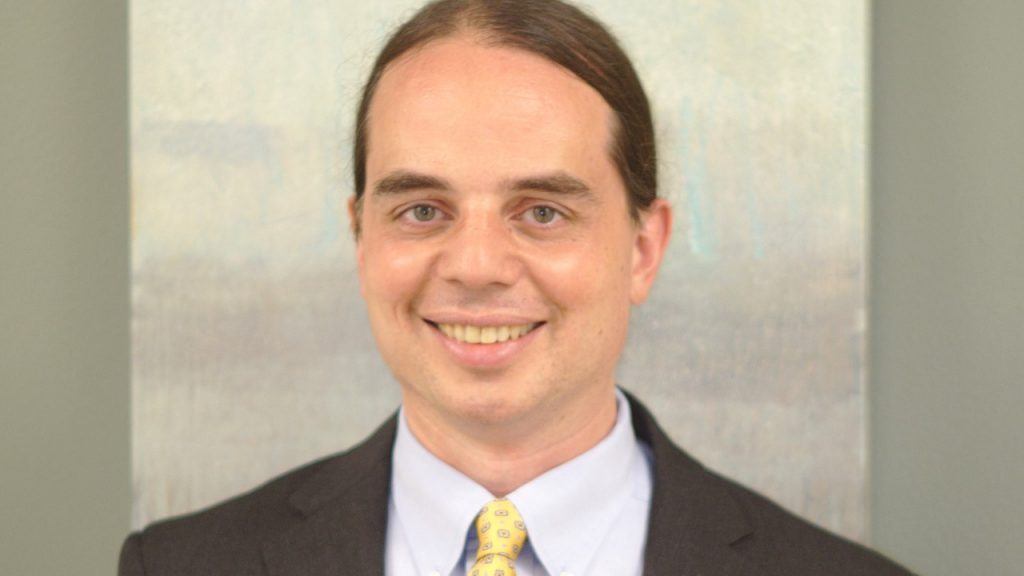Anyone
who
has
read
this
column
knows
how
much
importance
I
place
on
the
growing
role
of
insurance
in
the
IP
litigation
space.
Last
year,
I
had
the
pleasure
of
interviewing
a
leading
insurance
broker
—
himself
a
former
litigator
—
about
the
opportunities
created
when
insurance
is
brought
into
play
in
a
litigation
context.
As
we
have
arrived
at
2023’s
end,
it
became
clear
to
me
that
an
update
on
the
state
of
this
increasingly
important
slice
of
the
patent
litigation
ecosystem
was
in
order.
I
am
pleased,
therefore,
that
once
again
we
get
to
hear
from
Stephen
Kyriacou
Jr.,
a
managing
director
and
senior
lawyer
in
Aon’s
Litigation
Risk
Group,
where
he
structures
and
places
litigation
risk
insurance
policies.
Stephen
was
the
first
insurance
industry
hire
dedicated
solely
to
the
litigation
and
contingent
risk
insurance
market,
which
he
has
been
working
to
develop
and
grow
since
2019.
Stephen
has
twice
received
the
designation
of
“Power
Broker”
from
Risk
&
Insurance
Magazine
(in
2022
and
2023),
which
called
him
“a
pioneer
in
judgment
preservation
insurance,”
and
is
the
only
litigation
and
contingent
risk
insurance
broker
to
have
been
so
recognized.
While
Stephen
places
insurance
across
all
of
Aon’s
solution
lines,
he
specializes
in
single-case
judgment
preservation
insurance
and
adverse
judgment
insurance
placements.
Now
to
the
interview.
As
usual,
I
have
added
some
brief
commentary
but
have
otherwise
presented
Stephen’s
answer
to
my
first
question
as
he
provided
it.
Gaston
Kroub:
It’s
been
about
18
months
since
our
last
conversation,
where
you
gave
a
great
primer
on
the
litigation
and
contingent
risk
insurance
market
(Part
I
here
and
Part
II
here).
What’s
been
happening
in
the
space
since
then?
Stephen
Kyriacou:
Eighteen
months
doesn’t
sound
like
a
long
time,
but
given
that
the
litigation
and
contingent
risk
insurance
market
has
only
really
existed
in
its
current
form
since
2019,
it
actually
represents
about
a
third
of
the
life
of
the
market.
But
with
respect
to
how
things
are
progressing,
we
have
continued
to
see
“hockey
stick”
growth
in
terms
of
activity
in
the
space
over
the
last
18
months.
One
of
the
best
indicators
of
activity
in
the
market
is
looking
at
the
“submissions”
through
which
litigation
and
contingent
risk
insurance
brokers
like
Aon
seek
formal
coverage
quotes
from
insurance
carriers.
Aon’s
submission
flow
is
up
this
year,
as
it
has
been
year-over-year
since
we
started
building
out
this
market
in
earnest
five
years
ago.
And
while
we
don’t
have
great
visibility
into
submission
counts
from
other
brokers,
we
do
know
that
submission
flow
across
the
board
is
way
up,
with
several
leading
insurers
in
the
space
recently
reporting
to
us
that
they
expected
to
see
between
100
and
120
submissions
for
2023
by
the
time
the
calendar
turns
to
January,
which
is
10
per
month
at
the
high
end
of
that
range.
That
level
of
activity
would
have
been
unthinkable
in
the
early
days
of
this
market,
so
it’s
been
incredibly
gratifying
to
see
how
things
have
grown
over
the
years.
There
are
also
more
insurers
writing
this
coverage
than
ever
before,
more
insurers
who
used
to
be
excess-only
players
who
are
now
starting
to
write
primary
coverage
on
deals,
and
more
litigation
and
contingent
risk-focused
underwriters
at
insurance
companies,
as
well,
with
many
insurers
recently
hiring
from
the
litigation
funding
world.
And
as
deal
flow
continues
to
increase
and
insurers
get
more
sophisticated
in
their
underwriting,
we
expect
to
see
more
complex
and
creative
deals
getting
done
because,
in
the
past,
there
had
been
good
opportunities
that
insurers
passed
on
solely
due
to
lack
of
underwriting
bandwidth
or
expertise
in
a
given
area
of
the
law.
Policies
of
all
sizes
are
continuing
to
get
done,
as
well.
Our
team
at
Aon
has
closed
two
$500
million-plus
judgment
preservation
insurance
policies
this
year
alone,
and
we’re
seeing
tremendous
insurer
interest
in
smaller,
sub-$50
million
policies,
too,
including
several
that
have
been
led
by
insurers
who
were
either
new
to
the
space
or
who
had
previously
participated
only
as
excess
insurers
on
these
policies,
but
had
never
led
them.
And
we’re
seeing
increased
activity
in
the
U.K.
and
EMEA,
as
well,
and
increased
cross-border
activity
where
U.S.
insureds
are
buying
insurance
for
U.K.
or
European
litigation
risks
and
U.K.
or
European
insureds
are
taking
out
these
policies
to
insure
U.S.
litigation
risks.
This
uptick
in
cross-border
activity
has
been
a
big
boon
for
our
team
at
Aon
given
that
we
have
a
full
team
of
litigation
and
contingent
risk
brokers
in
the
U.K.
and
Europe,
several
of
whom
joined
Aon
from
industry-leading
litigation
funders.
Interest
in
these
solutions
is
rising
in
Asia,
as
well,
which
prompted
us
to
recently
hire
the
first
litigation
and
contingent
risk
broker
on
that
continent,
who
works
out
of
Singapore.
We
have
also
seen
increased
interest
in
and
awareness
about
the
use
of
insurance
to
ringfence
contingent
risks
as
a
means
for
releasing
capital
that
otherwise
would
be
tied
up
pending
the
outcome
of
a
litigation,
dispute,
regulatory
inquiry,
or
other
similar
situation.
These
tend
to
be
very
low-risk
situations
where
the
insured
benefits
from
accessing
funds
sooner
than
it
otherwise
would
be
able
to.
Increased
underwriting
bandwidth,
experience,
and
know-how
has
improved
the
market’s
ability
to
do
these
types
of
deals,
which
rarely
fit
into
a
simple
box.
And
perhaps
more
than
anything,
these
litigation
and
contingent
risk
insurance
solutions
—
particularly
judgment
preservation
insurance,
which
has
been
the
main
thing
that
I
have
focused
on
developing
during
my
time
in
the
insurance
industry
—
are
becoming
“mainstream”
in
the
sense
that
we
no
longer
need
to
provide
a
“101”-level
primer
every
time
we
discuss
a
potential
candidate
for
coverage
with
someone.
Lawyers,
C-suite
executives,
litigation
funders,
and
the
other
folks
who
we
deal
with
on
a
day-to-day
basis
now
more
often
than
not
come
into
their
first
conversation
with
us
knowing
at
least
the
fundamental
basics
of
whatever
kind
of
insurance
coverage
we’re
talking
about
—
how
it
works,
what
it
does
and
doesn’t
do,
what
it
costs,
and
how
it’s
placed.
Litigation
funders,
too,
are
now
especially
well-versed
in
the
coverage
that
is
available
to
them
in
the
market,
which
demonstrates
that
years
of
presenting
at
conferences
and
building
relationships
in
that
world
has
paid
off.
When
I
left
Boies
Schiller
to
take
this
job
back
in
2019,
I
felt
like
I
was
really
taking
a
risk
to
get
in
on
the
ground
floor
of
something
that
may
or
may
not
catch
on,
and
to
see
that
now,
five
years
later,
it
has
more
than
caught
on,
and
has
become
an
incredibly
active
and
robust
area
that
lots
of
people
know
about
and
are
talking
about
and
are
actively
involved
in,
it’s
just
amazing.
GK:
Thanks
to
Stephen
for
such
a
comprehensive
overview
of
all
the
fantastic
developments
in
these
markets
over
the
past
few
years.
More
than
anything,
I
hope
that
readers
will
consider
Stephen’s
recap
as
a
call
to
action.
For
those
already
participating
in
the
growth
of
the
litigation
risk
insurance
space,
2024
and
beyond
is
the
time
to
keep
the
momentum
going
in
a
responsible
and
growth-oriented
way.
And
for
those
for
whom
this
slice
of
the
market
remains
unfamiliar,
now
is
as
good
a
time
as
any
to
learn
more.
By
doing
so,
IP
professionals
will
be
able
to
provide
more
value
to
their
colleagues
and
clients,
for
now
and
the
foreseeable
future.
Next
week,
Stephen
discusses
where
the
challenges
have
arisen
in
this
space,
as
well
as
his
thoughts
on
what
the
future
might
hold
in
his
slice
of
the
profession.
Please
feel
free
to
send
comments
or
questions
to
me
at
gkroub@kskiplaw.com
or
via
Twitter:
@gkroub.
Any
topic
suggestions
or
thoughts
are
most
welcome.
Gaston
Kroub
lives
in
Brooklyn
and
is
a
founding
partner
of
Kroub,
Silbersher
&
Kolmykov
PLLC,
an
intellectual
property
litigation
boutique,
and Markman
Advisors
LLC,
a
leading
consultancy
on
patent
issues
for
the
investment
community.
Gaston’s
practice
focuses
on
intellectual
property
litigation
and
related
counseling,
with
a
strong
focus
on
patent
matters.
You
can
reach
him
at gkroub@kskiplaw.com or
follow
him
on
Twitter: @gkroub.














 2.
2. 3.
3. 4.
4. 5.
5. 6.
6. 7.
7.
 9.
9. 10.
10. 11.
11. 12.
12. 13.
13. 14.
14. 15.
15.
 2.
2. 3.
3. 4.
4. 5.
5. 6.
6.
 8.
8. 9.
9. 10.
10. 11.
11. 12.
12. 13.
13. 14.
14. 15.
15.
 Kathryn
Kathryn
